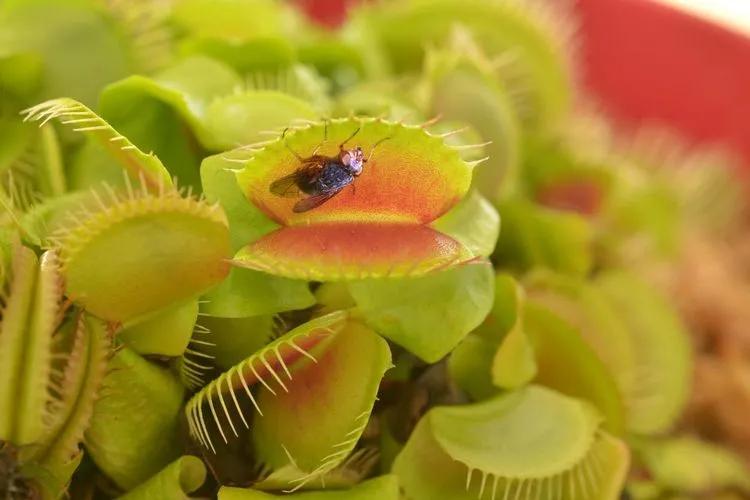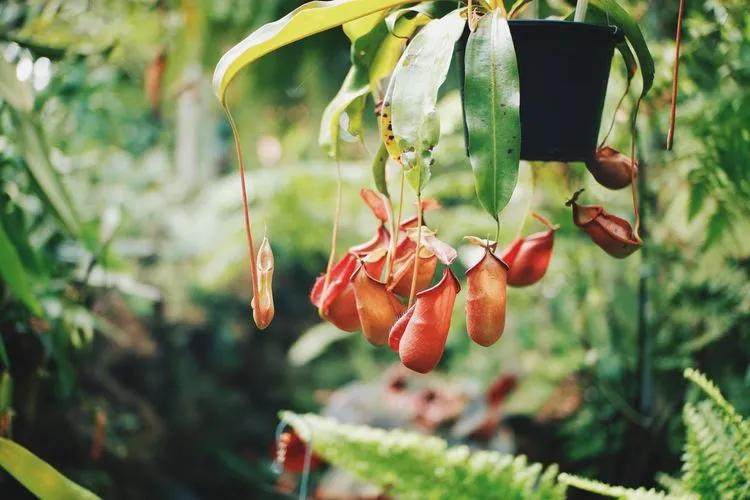It is not surprising for pet owners that a cat can eat a bug - but what if your plant will do so? Mother Nature has a lot of surprises, and plants that consume insects are one of them. Stay tuned to learn more about carnivorous plants and how to care for them at home (and yes, they should be fed).
What Are Carnivorous Plants?

Carnivorous plants are among the unique creations of nature. These are plants that consume animals or protozoans, primarily insects. They do so by trapping bugs as they derive all the needed nutrients from these creatures. In the world, there are about 600 species and 19 families of carnivorous plants. They grow in absolutely all corners of the planet in areas with warm, temperate, and tropical climates.
Some unique carnivorous plants include such species as big floating bladderwort, monkey cup, butterwort, and cobra lily. But all-time favorites of gardeners are venus flytrap, sundew, and pitcher plant.
Sundew

Drosera, commonly known as sundew, is the most common carnivorous plant with over 190 species. It is also the best option for those who have not planted carnivorous plants yet as it is relatively undemanding. Sundews are perennial grasses, sometimes with a tuberous thickened stem. They have rounded, oblong petiolate or sessile leaves in most species collected in a dense basal rosette. The edge and upper surfaces of the leaves are covered with large glandular hairs, irritable to contact, and secreting mucus. These hairs serve as a trap for insects. They are attracted to pellets at the tips of Drosera as they contain sweet nectar. After the insect has fallen into the plant's trap, the hairs twist at an angle necessary for digesting food. The prey dies quickly, its body dries up, and the plant digests it.
To grow sundew at home, you need wet soil that is poor in nutrients. It is best to use a 1:1 mix of peat moss and sand/perlite as soil. If you live in an area inhabited by sundew naturally, you can put it on the street, and it will feed itself almost all the time. If you want to keep it inside, provide your plant with houseflies, ants, spiders, gnats, moths, and fruit flies.
Pitcher Plant

The pitcher plant or Nepenthes is a carnivorous plant with unusual modified leaves, known as pitfall traps. They look like tiny bags with a lid. The plant produces nectar, which attracts insects to get inside the pitfall, the leaf closes, and an animal occurs inside the trap.
Since the pitcher plan in nature reaches large sizes, growing them on the windowsill won't be easy. Therefore they are preferred by greenhouse owners.
Caring for this plant, choose soil that is poor in nutrients. If the soil is too rich, the pitcher plant can die. For such plants, it is best to choose a place with access to insects so that the plant can “hunt” itself. But you can also feed it with flies, cockroaches, or other small insects. Oddly enough, dry fish food in the form of flakes is also suitable. Bloodworms are an ideal choice: they have a positive effect on plant health and help avoid many diseases.
Venus Flytrap

Venus flytrap is one of the most popular carnivorous plants that thrive on the windowsill. It is a small herb with a rosette of 4-7 leaves that grow from a short underground stem. On the leaves, there are traps that resemble a mouth. In the wild, the Venus flytrap attracts spiders, flies, and other insects into its “mouths”. The plant produces nectar which attracts various bugs and especially flies.
Just as with other carnivorous plants, the soil for venus flytrap should be a mixture of peat moss and sand (1:1 proportion). Flies, crickets, mealworms, and bloodworms are the best food for the Venus flytrap. It would be best to feed it once a week. In the summer, these plants need a lot of water since the soil dries fast. However, be careful, do not overwater it - it can quickly die. We recommend watering flytraps from the bottom. During the process of usual watering, the top layer of the soil is pressed, and this might be harmful to this delicate plant.
Important Notes
There are several specific rules in caring for carnivorous plants. As you have noticed, all of them prefer poor soil. These plants developed their hunting skills as a result of a lack of nutrients in the soils where they grew naturally, so now they get all the needed nutrients and minerals from their food.
Another vital thing to remember about carnivorous plants: they must be watered with distilled water only. Do not use tap, bottled, or filtered water. Just as with soil, this requirement is a result of their hunting abilities. High amounts of minerals will harm these plants.
Are They Dangerous to People?
No! It is a myth. Carnivorous plants are not dangerous to humans at all. They consume mostly insects; tiny mammals like rodents are their maximum ability. However, they can still digest the flesh of animals and humans if it is fed to them in tiny bits. There is no point in being scared of them - they will just help you in reducing the number of insects in your home.
Carnivorous plants are exotic, but any plant lover can get them today. They will fit perfectly on your windowsill and diversify your home oasis. You will not get bored by replenishing your plant with energy with the help of live insects. Have fun and grow carnivorous plants.
FAQ
Are Carnivorous Plants Suitable for Indoor Environments?
Carnivorous plants can do well indoors if given bright light and kept in moist, low-nutrient soil with distilled water. Venus flytraps and sundews are the easiest types to grow on a windowsill.
